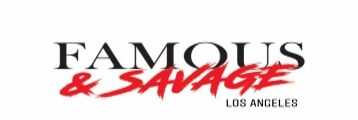HASSAN HAJJAJ
Hassan Hajjaj (born Larache, Morocco in 1961) is a contemporary artist who lives and works between London, UK and Marrakech, Morocco, and is known as the “Andy Warhol of Marrakech.” Hajjaj’s work is in the collections of the Brooklyn Museum, New York City; the British Museum, London; the Nasher Museum of Art, Duke University, Durham, NC; the Newark Museum, New Jersey; Los Angeles County Museum of Art, Los Angeles; Los Angeles Museum of Contemporary Art, Los Angeles; the Victoria & Albert Museum, London; the Farjam Collection, Dubai; Institut des Cultures d’Islam, Paris; Kamel Lazaar Foundation, Tunisia; and Virginia Museum of Fine Art, Richmond, VA. Hajjaj was the winner of the 2011 Sovereign Middle East and African Art Prize[3] and was shortlisted for Victoria & Albert Museum’s Jameel Prize in 2009. In 2013, Rose Issa Projects published a monograph of the artist exploring his upbringing in Morocco and London, his experiences in fashion and interior design, and his adventures in the music industry influence the vibrant colours, joyful spirit, and visual rhythm of his highly sought-after images.
Hajjaj’s first feature-length film, Karima: A Day in the Life of a Henna Girl, premiered at the Los Angeles County Museum of Art in May 2015. The film takes viewers into the world of one Hajjaj’s most iconic series, Kesh Angels, depicting the henna girls of Marrakesh.
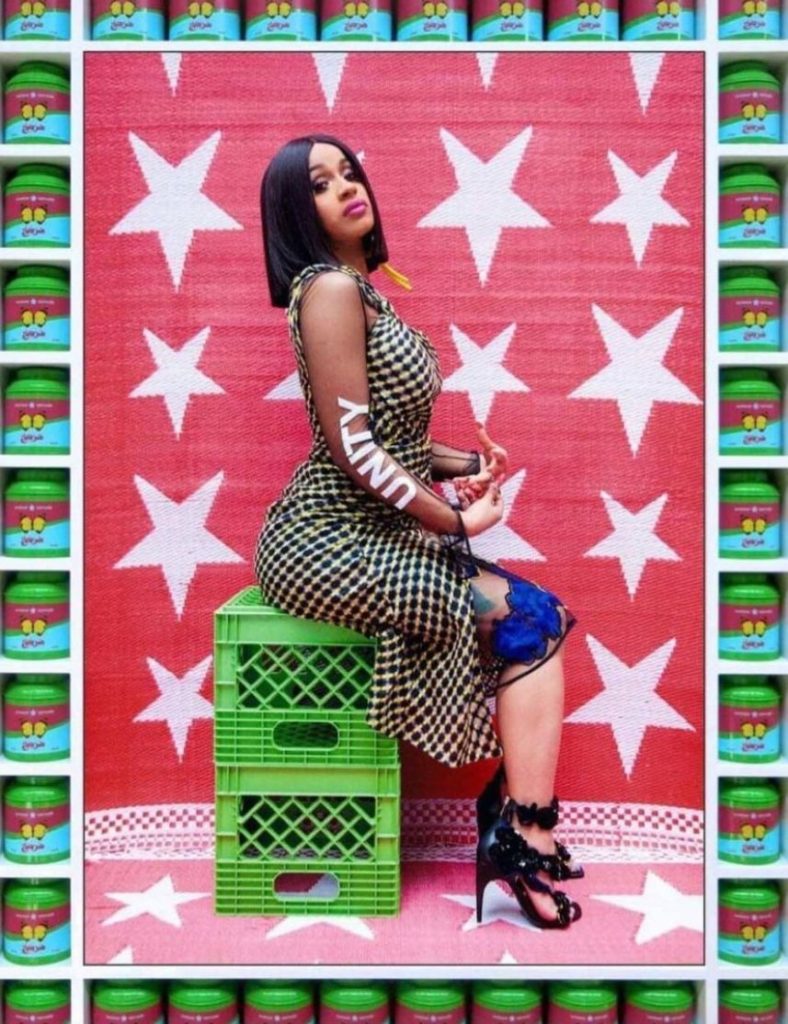
Hassan Hajjaj: My Rock Stars was exhibited at the Memphis Brooks Museum in 2016.[6] The film was shown at Art Basel in Basel, Switzerland in June 2015, curated by Cairo-based film curator and lecturer Maxa Zoller. A new exhibition Hassan Hajjaj: La Caravane opened in London’s Somerset House on 5 October 2017, his first solo show in the city in seven years. Hassan Hajjaj paid tribute to fellow Moroccan celebrities in “My Maroc Stars”. The work featured artists, singers and designers such as Hindi Zahra, Dizzy DROS, Yassine Morabite, and many others.
One of Hassan Hajjaj’s most famous works include Kesh Angels (2010), a photograph of five veiled women from Marrakech, Morocco, as they sit atop motorbikes stationed in front of the Theatre Royal. In Hajjaj’s photograph, the women are adorned with colorful, heart-shaped sunglasses and striped socks, as the edited graphic pattern of repeating upside-down red food cans lines the border. Aside from mixing elements of both Moroccan and pop culture references together in his art, Hajjaj is also known for subverting the Western viewer’s expectations as he deconstructs the “tourist gaze that fetishizes veiled women” and instead situates them in a purposefully jumbled, animated light. By refashioning the Westernized view of Orientalism, Hajjaj states that he wanted to illustrate the multidimensional facets of Moroccan society in his photograph. Similarly, Femmes du Maroc, a popular magazine for women in Morocco, held the first fashion event to showcase Moroccan wear in 1996. Journalist Aïcha Zaïmi Sakhri has commented on the now-popularized event, Caftan, by stating that its purpose was to show women that the caftan is not just a part of cultural wear, but a garment that could be worn in a fun, fashionable and modern sense. Much like the magazine’s attempts to modernize Moroccan women fashion, Hajjaj’s colorful photograph of the veiled, playful women atop their motorbikes contrasts the audience’s perceptions of Moroccan women to show the “tension between assumption… and reality”. Hajjaj was commissioned by Vogue to shoot a series of photographs of pop singer, Billie Eilish, for the cover of their March 2020 magazine. In Hajjaj’s cover, the singer sports a Gucci jacket and necklace, as she poses against a colorful patterned backdrop, which the self-taught photographer is known for. The magazine issue also included other photos shot by Hajjaj, including one where Eilish wore a blazer made from the flag of Casablanca football club, Wydad AC. Eilish was dressed in Hajjaj’s clothing label Andy Wahloo, and is shown posing in front of a decorative straw rug that is commonly found in North Africa. Hajjaj’s style is easily recognizable and combines “elements of high fashion with trashy pop culture”. He is known to mix luxury brands with obvious fakes and usually frames his photography with repeated motifs consisting of tin cans. Hajjaj’s stylings combine camouflage, polka-dot, or animal prints with traditional fabrics from the souk. His photos “bring a sense of play that melds Moroccan heritage with a patchwork hip-hop swagger”.
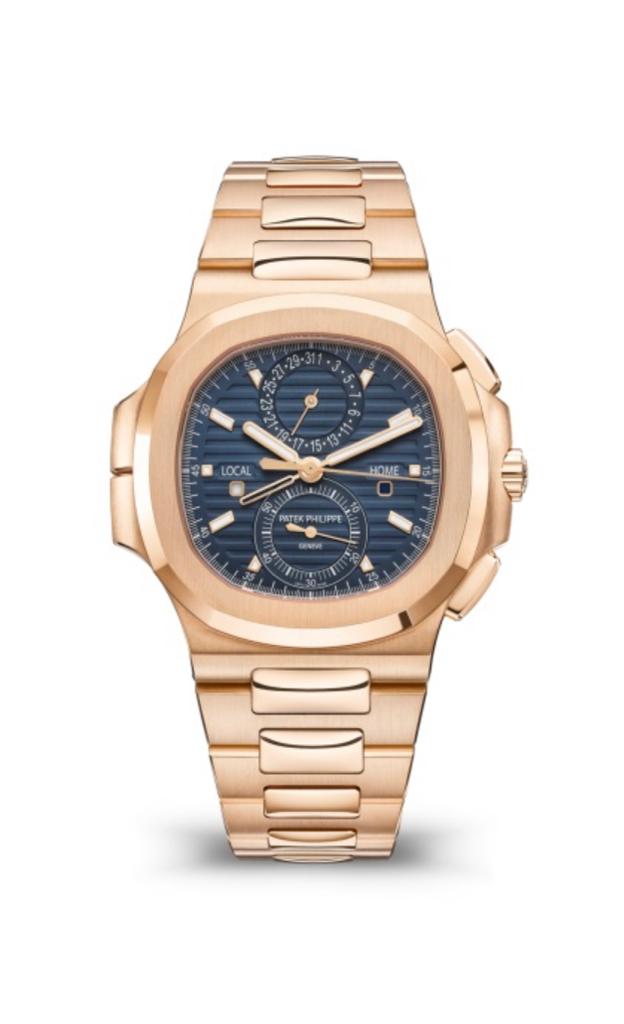
PATEK PHILIPPE
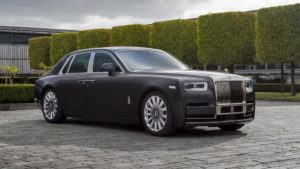
ROLLS ROYCE
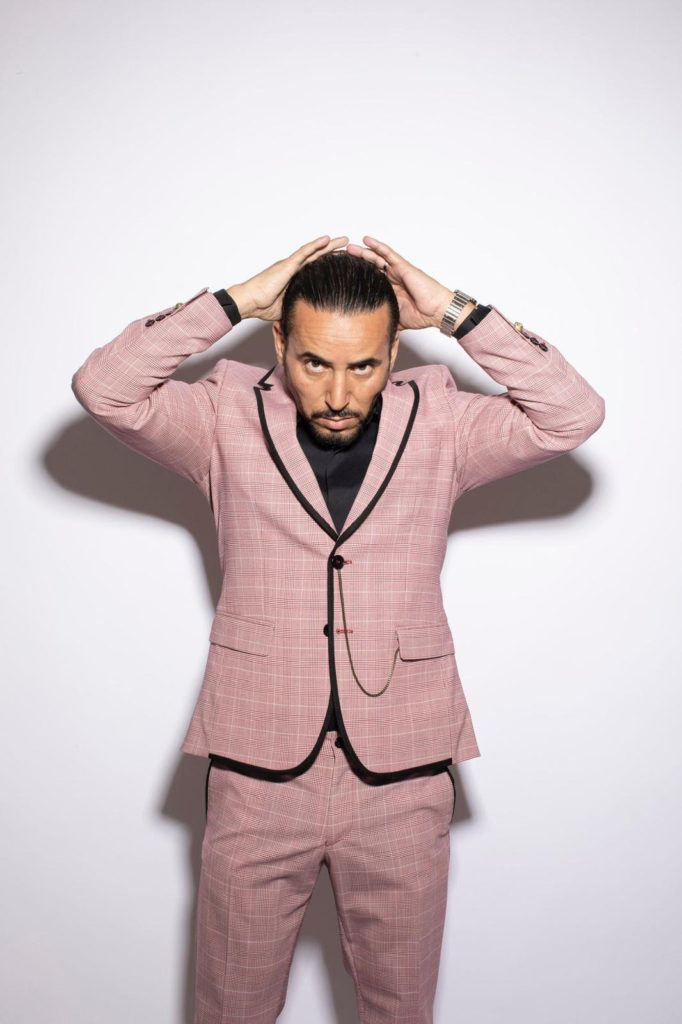
Jamal Antar

Richard Orlinski
CONTACT US
Contact details for people and departments at info@famousandsavage.com
